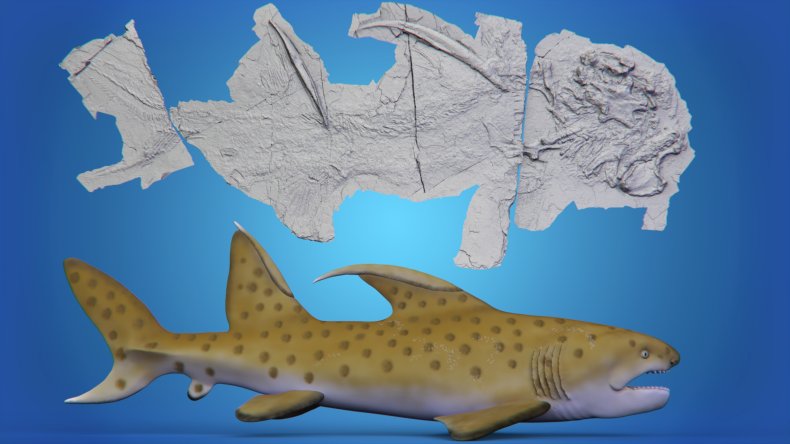300-Million-Year-Old "Godzilla Shark" Had 2.5ft-Long Spines, 12 Rows of Teeth
A shark that lived 300 million years ago has now been formally named by scientists after several years of research.
The shark was given the nickname "Godzilla Shark" when it was first discovered in 2013 via fossils found in the Manzano Mountains in New Mexico.
Based on these fossil records scientists think the shark was 6.7 feet long, had 12 rows of teeth contained in powerful jaws, and two large fin spines on its back measuring 2.5 feet. These features led scientists to give the shark its monstrous nickname.
The shark's scientific name, Dracopristis hoffmanorum, was announced in a press release by the New Mexico Museum of Natural History and Science (NMMNHS) on Thursday.
It is also called Hoffman's Dragon Shark in recognition of its big jaws and large spines and in honor of the Hoffman family who own the land where the fossil was found.
Scientists think the large fin spines on the shark's back could have acted as a defence against predators such as an even larger shark called Glikmanius—teeth of which were found in the same rocks that yielded the Dracopristis fossil.
The Dracopristis is a type of ctenacanth, and its skeleton will give scientists new ideas about how this type of shark fits into the wider shark family.
The museum press release reads: "Thus, Dracopristis and other ctenacanth sharks represent a unique evolutionary branch of the sharks that split off from the modern sharks and rays approximately 390 million years ago, but that went extinct by the end of the Paleozoic Era, about 252 million years ago."
The fossil was discovered by John-Paul Hodnett, a paleontologist at the Maryland National Capital Parks whilst he was using a pocket knife to sift through limestones in the Manzano Mountains. At one point, he hit on an object that felt different.
He said in a press release: "At first, I thought what was flipped over was the cross-section of a limb bone, which was exciting as no large tetrapod had been found at that site before."
Other scientists Hodnett was with soon got involved. The next day, researchers had a clearer idea of what Hodnett had found. It was not a tetrapod fossil but a "really big shark" one, and it turned out to be the most complete ctenacanth shark fossil discovered in North America.
The fossil was further researched and scanned over a period of seven years at the NMMNHS preparation lab.
Scientists determined the shark probably spent much of its life in shallow lagoons and estuaries where it ambushed crustaceans, fish, and even other sharks.
As well as Hodnett, the research team consisted of Eileen D. Grogan and Richard Lund of St. Joseph's University in Pennsylvania; Spencer G. Lucas, Curator of Paleontology at NMMNHS; Tom Suazo, former fossil preparator at NMMNHS; David K. Elliot of Northern Arizona University; and Jesse Pruitt of Idaho State University.


